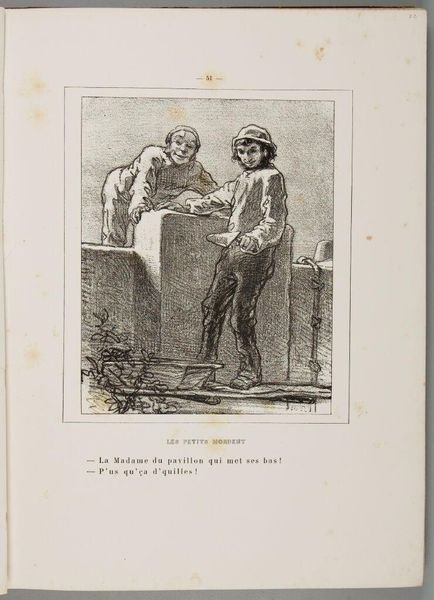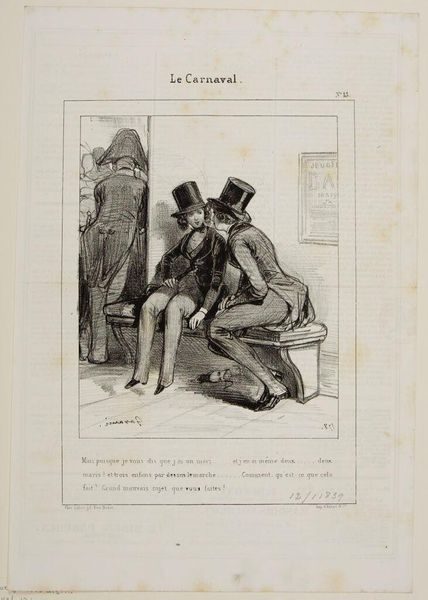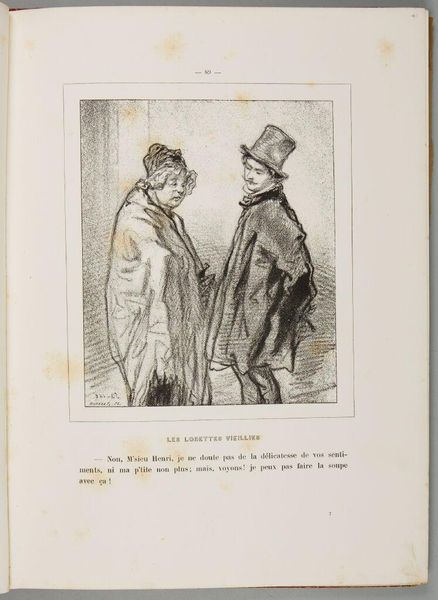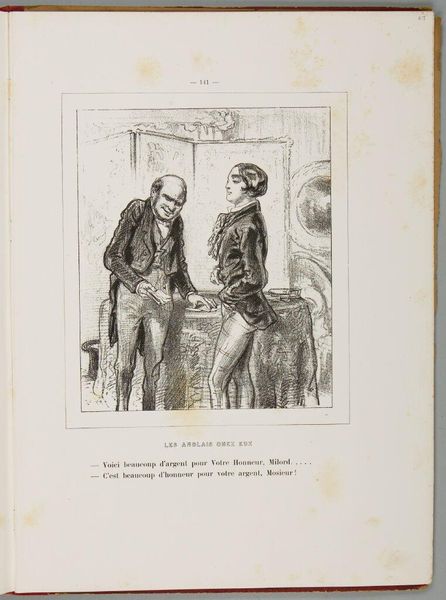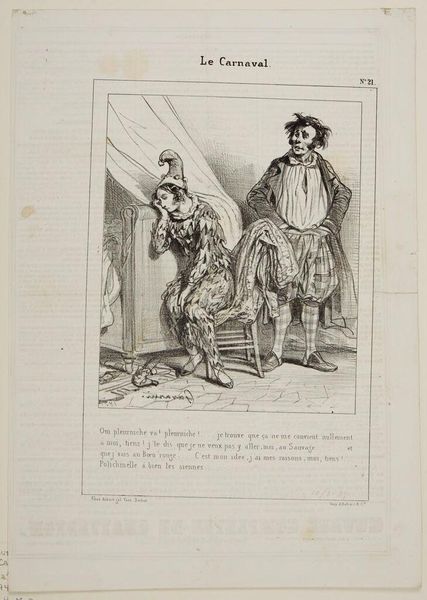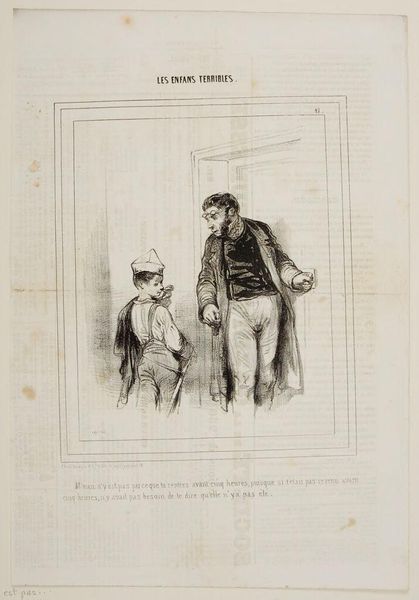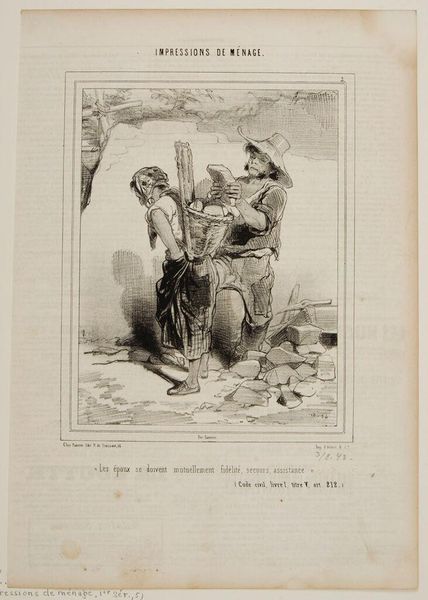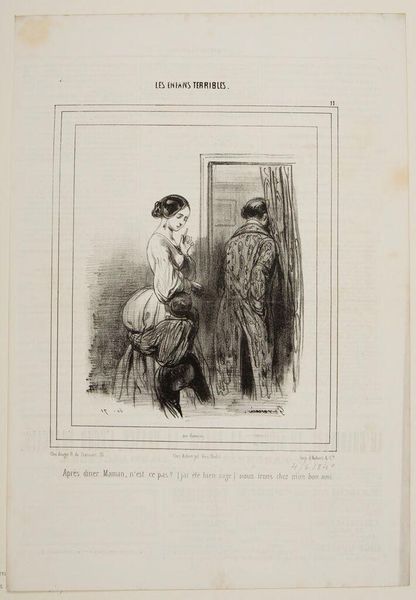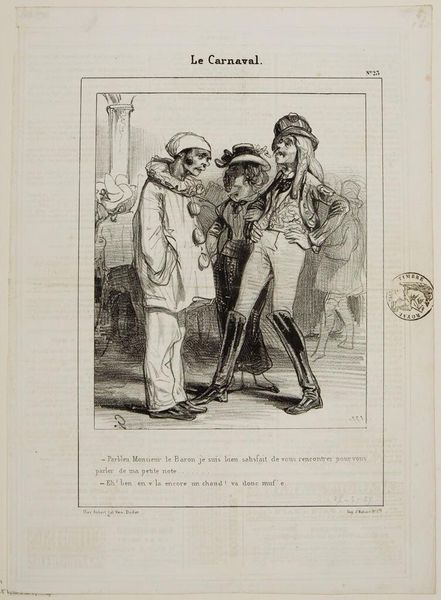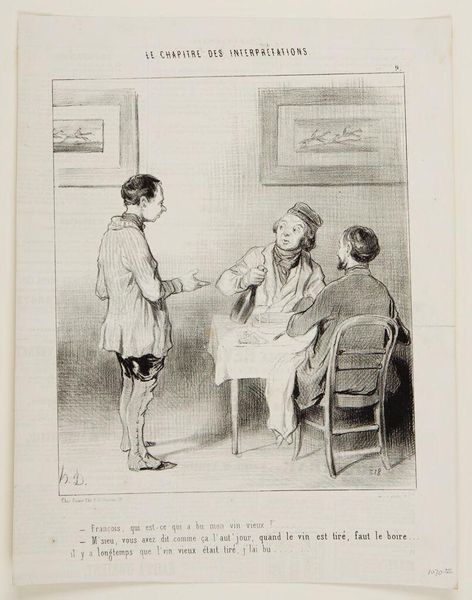
Who is more pitiable in the world than a man united with ... a dockman? It's a woman at the mercy of Pierrot. 1852
0:00
0:00
Dimensions: image: 19 x 16.2 cm (7 1/2 x 6 3/8 in.)
Copyright: CC0 1.0
Editor: Paul Gavarni's lithograph, "Who is more pitiable in the world than a man united with ... a dockman? It's a woman at the mercy of Pierrot," certainly evokes a sense of melancholy. What historical context shapes your understanding of this piece? Curator: This work implicates the socio-political dynamics of 19th-century France, particularly regarding gender and class. The Pierrot figure, traditionally a symbol of the suffering artist, here represents male dominance. It invites us to consider the limited agency afforded to women within patriarchal structures, wouldn't you agree? Editor: Absolutely, the woman’s vulnerability is palpable. Curator: And the dockman? He's part of the working class. Gavarni critiques societal power imbalances, contrasting the "pitiable" man with the woman subjected to Pierrot’s whims. Editor: So, the artwork is less about individual suffering and more about systemic oppression. Curator: Precisely. Considering its time, it subtly challenged prevailing social norms, sparking critical reflection on the plight of marginalized groups. Editor: I see it now. Thank you! Curator: It’s through such dialogue that we uncover the art's enduring relevance.
Comments
No comments
Be the first to comment and join the conversation on the ultimate creative platform.
